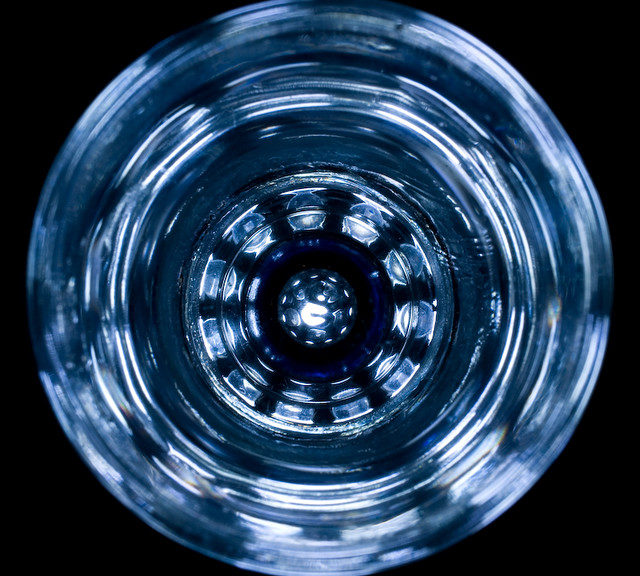
SEE THE WHOLE GLASS (AND USE IT)
We know the cliché – the glass with the water and the accompanying question delivered by some snot of a snippet: Is the glass half-full or is it half-empty?
We think we know what the guys in the white coats say about choosing one thing over the other means too.
Over and over we’ve been told that if you say the glass is half-full, then you are probably an optimist. If you say the glass is half-empty, then you’re a pessimist.

My own favorite take on the thing is a joke:
While the optimist and the pessimist were arguing about the glass, the opportunist grabbed it and drank the water.
The Light of My Life remembers one time he found a tiny bright blue bird egg that he had never seen before (or since). When he showed his find to his grandson Charlie, the little boy immediately grabbed the thing and popped it in his mouth. He thought it was a candy Easter Egg.
To Charlie’s dismay, the thing turned out to be a rotten old bird egg. YUCK! They never did find out what kind of bird laid the egg. (Hawaii doesn’t have robins.)
It seems that opportunists don’t fare too well either sometimes.
PESSIMISM AND OPTIMISM ARE NOT WORLD-VIEWS
I don’t know how many kazillion words have been written about the joys of being an optimist as opposed to the downer of being a pessimist.
Optimism is touted as the cure for the blues and life-induced funk and a panacea for a hap-hap-happy life. Pessimism gets a lot less good press. We get the impression that we can actually choose one over the other and use it exclusively to hammer out our own best way of being. If only we could repress our pessimistic tendencies and enhance the optimistic ones, then we could all be happy campers, it’s said.
Alternatively, if we could tone down our namby-pamby, airy-fairy optimistic tendencies then we could kill it as bad-ass warrior types and win the world.
The thing of it is, every human alive is a mixture of optimism and pessimism. We really are not either-or. We are both.

Our ancestors who excelled in either of them were likely to survive Life’s vicissitudes, prosper, and procreate. Optimism and pessimism both helped the long-ago barbarians who lived long enough to become our ancestors.
Think about it.
In order to survive the fangs and claws of the monsters in the environs as well as the pitfalls and harshness of ordinary savage living, you really needed to tap the wariness and alertness pessimism engenders.
The best warriors and strategists are powerful pessimists. It’s how they figure out what and who to fight against. It’s how they determine the best tactics to use when trying to re-order the world.
In order to get all the babes and the boy-toys and to earn the goodwill of your neighbors as well as have the wherewithal to go exploring into the unknown, optimism is surely a good thing to have in your mana (personal power) toolbox too.
SO SAYETH THE GOOD DOCTOR
The late Paul Pearsall was an internationally recognized neuropsychologist, a popular speaker and the author of more than 15 books.
In 2005, while he was an adjunct clinical professor at the University of Hawaii at Manoa and a member of the board of the Hawaii State Consortium for Integrative Health Care, he wrote THE LAST SELF-HELP BOOK YOU’LL EVER NEED: Repress Your Anger, Think Negatively, Be a Good Blamer and Throttle Your Inner Child.
In it, he takes on the pop-psychology industry and points out the fallacies inherent in their “scientism” – taking the research results of real scientists and molding and massaging the for-real findings to suit whatever latest flavor of living these “experts” are touting as well as throwing in a whole bunch of “everybody-knows” in there.
Pearsall advises taking it all in with at least a grain of salt.
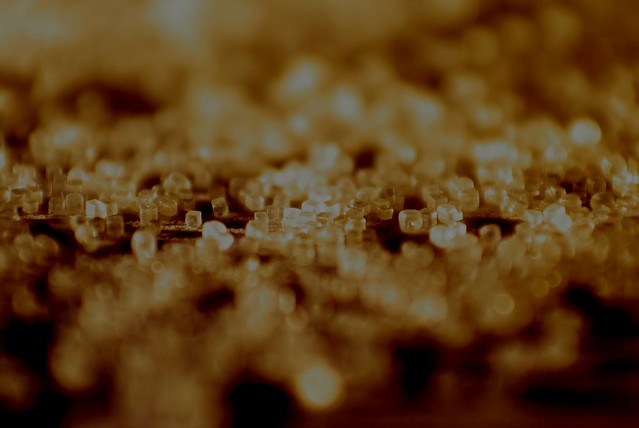
But, he also advises that we step back from the blather and think for our own selves and try to determine what is real and true and right for us.
It’s a cool book.
About optimism and pessimism, Pearsall recommends learning to use both styles of thinking to navigate through the world.
In other words, the guy is telling us to take a look at the whole glass and use the durned thing to quench our thirst. Fill it up, drink it down…whatever.
He also recommends that you stop beating yourself up because you are not really bent the way the current guru of righteous living says you should be.
The whole reason he wrote the book, Pearsall says, is because so much of the stress of modern living that he had seen seems to arise from a person fighting against his or her own nature and trying to be something they are not.
He starts the introduction to the book with a quote from Ben Wyld, “Life used to be so simple before we all started reading about how to live it.”
Pearsall goes through many of the knee-jerk truisms that self-help “experts” propose about Life and Living Right and deconstructs them one by one. His advice, always, is to work on figuring out what you think your own self.

TWO FUNDAMENTAL WORLD VIEWS, ACCORDING TO A MYSTIC
Poet, philosopher and self-confessed mystic Mark Nepo talks about two fundamental world-views in his 2005 book, THE EXQUISITE RISK: Daring to Live an Authentic Life.
He says there are only two. Either one emphasizes the connectedness of all life, or one accepts disconnectedness and isolation as our human fate.
According to Nepo, before the 20th century, all us humans pretty much agreed that everything is related to everything else, that all the parts are connected to each other as well as to the whole and that life is “empowered by actualizing this relatedness.”
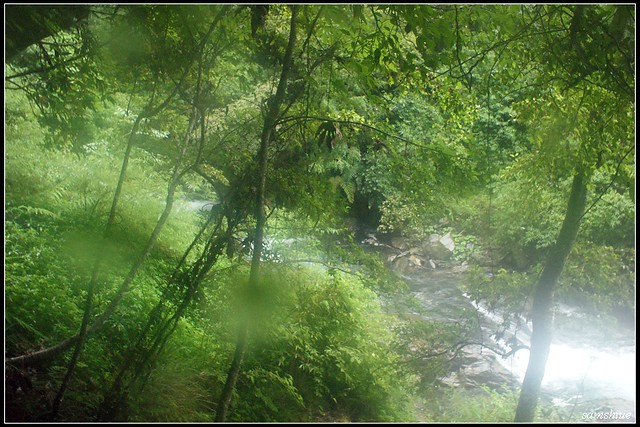
Most of the old wise guys offered basic variations on that same theme, that we humans are a part of something way, way bigger than our own little selves.
But, then, Nepo says, out of the rubble of a world torn apart by the devastation of two world wars, an alternative world-view rose up in the West that became the foundation of our post-modern sense of disconnectedness and isolation.
This way of thinking was dubbed “existentialism.”
According to its proponents, nothing is connected to anything. We are all isolated bits bumping around in the meaninglessness of it all and the fact of our existence is all there is. In other words, we humans live a hard-scrabble life and then we die.
The only meaning that can be found or generated, according to this world-view, is in the moment we are about to enter and in what we want and what we care about and what we do and how we can use the all of everything to make things go our own way.
He says, “…the postwar world dressed itself in unbridled technology and existentialism took a powerful hold on the profit-driven imagination of Westerners.”
And he goes on with that grim scenario.

I, too, am going to plunk my one vote down for connection.
(Otherwise, I find, the world turns into such a cold and lonely place and you get to feeling there’s no point to any of it.)
What do you think?
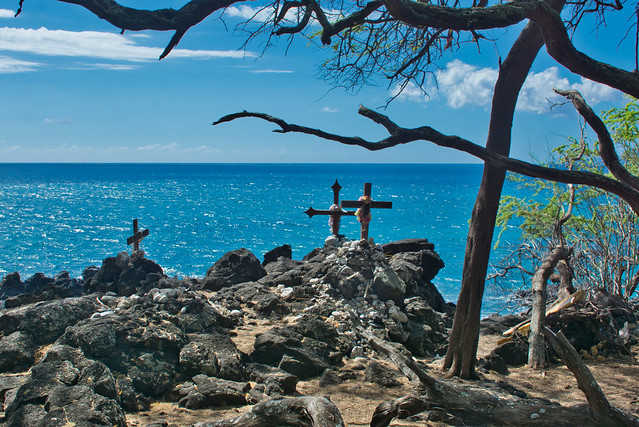
HAWAIIAN-STYLE CATEGORIES OF THOUGHT (ACCORDING TO ME)
I am really proud of myself.
I am pretty sure that I finally figured out an ancient Hawaiian way of categorizing the thoughts we humans think. (The thing has puzzled me all of my life and I finally got it to make sense.)
Hawaiians believe our thoughts arise from three different sources – our po’o (head), our pu’uwai (heart), and our na’au (gut).
Maybe I’m wrong, but the way I figure it is this:
- Po’o thoughts are our left-brained, pragmatic and rational everyday thoughts and strategy-planning and all that.
It’s about stopping by the store on the way home from work to grab some milk and about figuring out how to launch a new product and stuff like that.
- Pu’uwai thoughts are about connection – to other people, to the world and to the Divine.
It’s about things like showing respect and taking care of nurturing other people and the world and ourselves and all that stuff…the touchy-feely jazz.
- Na’au thoughts are the instinctual, survival moves that we do on auto-pilot.
It’s doing the body- and mind-moves that allow us to get away and stay away from danger as best as we can. It’s about avoiding using the face-block as a default defense move.
I say we need to use all of the different ways of thinking humans have developed to navigate through the world.
Each one has its place and its time, and we need to learn how to work effectively with all of them so we can get to wherever we want to go and arrive there more or less intact.
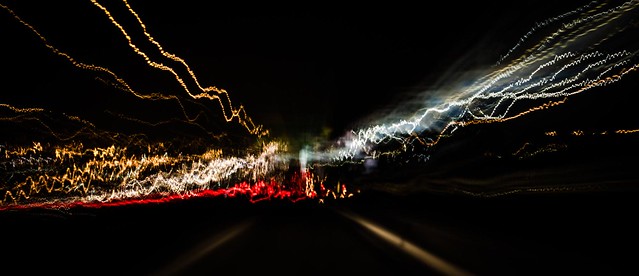
THOUGHTS ON DITTY-BOPPING
I get it.
Really.
Ditty-bopping along
In a Prozac state-of-mind
Feels GOOD.
Only problem is:
It just does not
Feel Right….
The whole deal
About blissing out,
Swanning around,
Laying down
The sweetness and light
Like some hippy-dip
Nutella fairy,
Tripping through the
Corn-pone flowers and all,
Ignoring all the for-real shadows
Is…lovely.
It sure doesn’t do
A whole heck of a lot of good
For the truckloads of dead babies
Rolling through the
Jungles and mean streets
Of our neighborhood, does it?
I don’t know…
Don’t know what anybody
Can do for our cousins
Living in the suburbs of hell.
Don’t know how to turn
The dark tide
Before its time.
Don’t know how to mend
Even one broken heart.
There’s a lot I don’t know.
I do know
Darkness retreats
Every single time
You fire up just one skinny candle.
THAT I can do.
By Netta Kanoho
Header Photo credit: “In the windmills of your mind,” by Stavros Markopoulous via Flickr [CC BY-NC-ND 2.0]
……
SOME OTHER POSTS TO EXPLORE
(Click on each of the post titles below and see where it takes you…)
……
Thanks for your visit. I’d appreciate it if you would drop a note or comment below and let me know your thoughts.
20 thoughts on “SEE THE WHOLE GLASS (AND USE IT)”
This is really cool. I can’t even begin to count how many times I got asked that question whether the glass is half full or half empty. I have always managed to answer the question every time that the glass was half-full.
I don’t know if that makes me optimist or whatever, but that’s just how I see things.
But I have to admit that I aint never heard of the opportunist taking the glass and drinking it while the optimist and pessimist is arguing over it. I like that answer way better than mines.
Great article though, really puts some things in our life into perspective and I am definitely going to check out that book, Sounds like an interesting read. Where is the best place we can buy it from?
Thanks for the visit and for sharing your thoughts, Garrett.
Amazon works for getting the books. Public libraries often have them as well. Do check them out.
Please come again….
This is amazing and thanks for sharing. I actually share the same line of thought with you that pessimism and optimism are just the traits that individuals express depending on the situation of things.
I like the presentation about this. As stated, the circumstance would determine the attitude we exhibit— optimism or pessimism.
I like your translation of the Hawaiian style categorisation of thought. It is simply great to know of.
I found this post to be very worthy and targeted at the basics of life. I will bookmark it and reread till I can read more meanings to life through it. Thanks
Thanks for the visit and for sharing your thoughts, RoDarrick. I’m glad the post spoke to you.
Please do come again.
You do not fail at all to teach me and inspire me with your post. I have learnt a great deal from this.
It’s funny your take on the issue of the glass cup between pessimists and optimists. I like that you can also follow up that concept with a real life event.
I think you’re right, we really need to take into consideration all the types of in-depth thinking the world has brought for us. We can weigh them all and see which works for us.
Overall, this post is well constructed just like the beautiful poem after it. I like your posts, thanks.
Thanks for the visit and for sharing your thoughts, Henderson. Thanks for stopping by.
Please do come again.
I found this article very thought-provoking and an interesting read. Rather than make an immediate comment after the first go-round of reading it, I decided to read it once again, slower and by section. There was that much “meat” to digest. You put a lot of heart and soul (and experience) into this.
The idea of seeing the whole glass and using it makes a lot of sense for everyone. Most do not do this, and they deprive themselves of being able to enjoy the most of what this life can offer to each of us, in my opinion. I run into people that are so switched on in some of the most remote places, while some in the developed and Western world cannot see beyond their nose.
I was an introvert as a kid, I read a huge number of books, and was pretty much into my own world in the world. Once I graduated from high school I went to Europe at the tender age of 17 and have been a world traveler since. It changed me from that introvert to an extrovert and I have not looked back.
The connection concept is what I am all about, on many levels and in a variety of settings…It has helped me expand my range of thoughts and ideas of what life is all about, and I can focus on activities that met those expectations I have set for myself, but not take myself (or the world) too seriously.
Great post and thanks for the effort I know it was putting it together!
Dave, I do thank you for the visit and for sharing your thoughts and your story.
You are right. So often, people do tend to limit themselves in so many little ways that prevent them from appreciating and enjoying life.
A connection mindset does counter that a lot.
I’m glad you enjoyed the post.
Please do come again….
Beautifully set out and worded website. always the optimist / always the pessimist as the saying goes… but I have now discovered I am the opportunist from reading your post.
with valentines day just around the corner there as some awesome reads that are sure to inspire plenty looking to impress their better half.
Some proper quality content and lots of it!
Such a amazing read I really enjoyed it.
Thanks for the visit and for sharing your thoughts, danny8085. I do appreciate it. I’m glad you enjoyed the post.
Please do come again….
Loll, the opportunist always grabs it all, drinks it all.
I must say that in this poem, I love the way you struck the balance. You saw it all in both, pessimism and optimism, and I see how you took the words from Pearsall, where he advised that we learn to use both style of thinking to navigate the world.
Parameter, thanks for the visit and for sharing your thoughts. I do appreciate it.
Please do come again.
Hi Netta, this is a very useful and thought provoking article to me personally. It is not just philosophical and psychological but also realistic and business minded.
Most of the time, situations determines our reactions and actions. Despite what the situation is, it is good for us to look at the opportunity in every situation.
Thanks for this article and I will revisit to learn from your rich stock of knowledge. Cheers
Joseph, thanks for the visit and for sharing your thoughts. You are right, I think: There can be opportunities hidden in every situation.
Please do come again.
As the consciously intentional optimist, I always strive to realign any pessimistic soul I find and try to win them over to my side.
My only reason has always been that they are always pulling the rug from under you, looking for the speck of a dark cloud on a clearly bright and sunny day and so many other things that threaten to puncture the sails.
However, having read your post, I have a renewed appreciation of the pessimistic side of life and it’s contribution to warring or exiting situations that are tending towards tricky.
Thanks too for sharing the Hawaiian thought classification system. Makes a lot of sense.
We are Blessed.
Thanks for your visit and for sharing your thoughts, Mark. I do understand your urge to strive to realign the pessimistic sorts around you. That also tends to be my default move. (I have to sit on my tongue a lot sometimes!)
I do find, however, that the rain-on-the-parade guys very often see pitfalls I tend to ignore and sometimes absolutely deny. That can be worth a heck of a lot.
I’m glad you found the Hawaiian thought thing worthwhile too.
Please come again.
Netta:
I found your article very motivating, informative and a great read. You cover a considerable amount of philosophical theory and ideas in such a short impactful article, which gives the reader a comprehensive overview to the philosophical concept of connectivity…that everything is connected.
The theory of connectivity was established by science who discovered particles from the initial big bang can be found in our own DNA.
I’m not sure I would call optimism or pessimism as a style of thinking, it’s more reactionary thinking to an event than an overall philosophy. I believe they come initially from our feelings, which we then turn into thinking feelings. This is not pure thought, rather thought created from emotions.
Understanding the concept of the “whole glass” is important to helping people develop critical thinking skills, unattached from their feelings. It’s important to understand the glass cannot be half-empty or half-full without both the empty and full part of the glass. They need each other to define their status as full or empty.
This article follows the school of thought found in authors such as Deepak Chopra and Baba Ram Dass. These authors and spiritual travelers have provided a number of publications that reinforce the idea we are all connected.
Thanks for the visit, terryiching, and for expanding on the post with your own thoughts. I do appreciate it. Cool!
Please do come again.
I think that whether you will see the glass half empty of half full has also to do with the kind of emotional status you are in any specific moment. But the more you argue one way or the other the one that will be successful and go forward is the one that will take action.
As you wrote….drink the damn thing instead of trying to determine how full it is. Just thinking about a problem will not make itself solved if you don’t actually do something about it.
Stratos, you make me laugh! I do agree….
Please do come again.